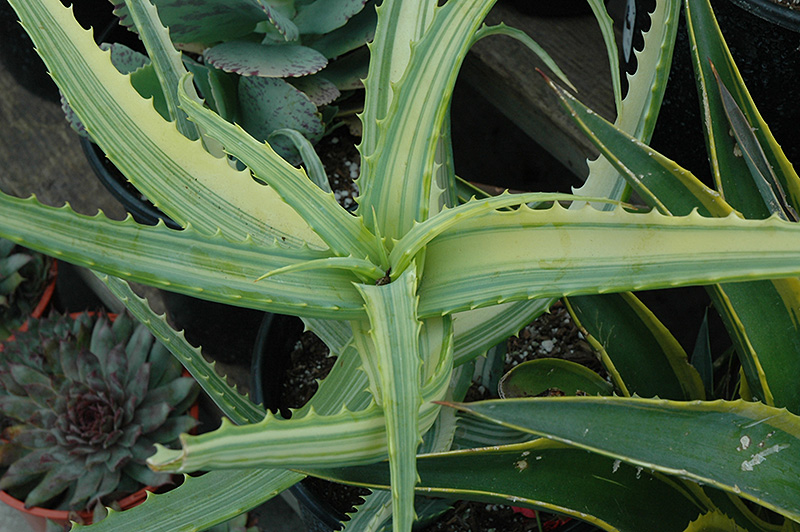Variegated Candelabra Aloe
Description
A multiple branched variety with a shrubby habit; beautiful rosettes of succulent, toothed, sword shaped leaves striped with pale yellow; occasionally produces erect racemes of tubular red flowers
Landscape Attributes
Variegated Candelabra Aloe is an herbaceous perennial with an upright spreading habit of growth. Its wonderfully bold, coarse texture can be very effective in a balanced garden composition.
Variegated Candelabra Aloe is recommended for the following landscape applications;
Planting & Growing
Variegated Candelabra Aloe will grow to be about 3 feet tall at maturity extending to 4 feet tall with the flowers, with a spread of 30 inches. It grows at a slow rate, and under ideal conditions can be expected to live for 40 years or more. As an herbaceous perennial, this plant will usually die back to the crown each winter, and will regrow from the base each spring. Be careful not to disturb the crown in late winter when it may not be readily seen!
This plant should only be grown in full sunlight. It prefers dry to average moisture levels with very well-drained soil, and will often die in standing water. It is considered to be drought-tolerant, and thus makes an ideal choice for a low-water garden or xeriscape application. It is not particular as to soil pH, but grows best in sandy soils. It is somewhat tolerant of urban pollution. This is a selection of a native North American species. It can be propagated by division; however, as a cultivated variety, be aware that it may be subject to certain restrictions or prohibitions on propagation.
Variegated Candelabra Aloe is a fine choice for the garden, but it is also a good selection for planting in outdoor pots and containers. With its upright habit of growth, it is best suited for use as a 'thriller' in the 'spiller-thriller-filler' container combination; plant it near the center of the pot, surrounded by smaller plants and those that spill over the edges. It is even sizeable enough that it can be grown alone in a suitable container. Note that when growing plants in outdoor containers and baskets, they may require more frequent waterings than they would in the yard or garden. Be aware that in our climate, this plant may be too tender to survive the winter if left outdoors in a container. Contact our experts for more information on how to protect it over the winter months.

